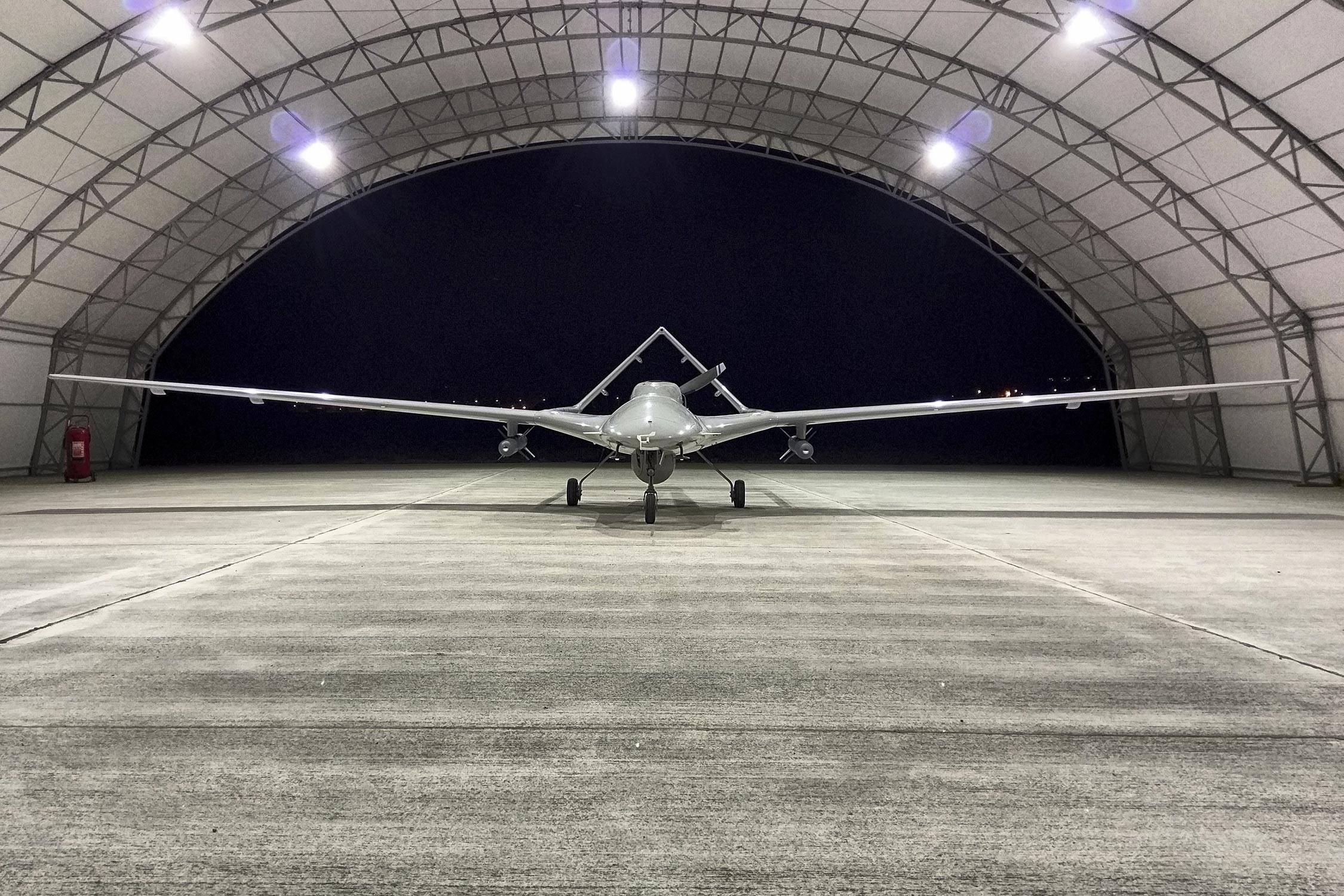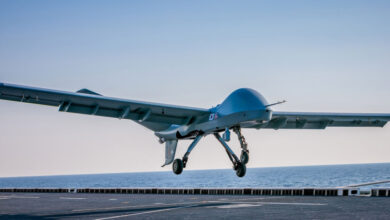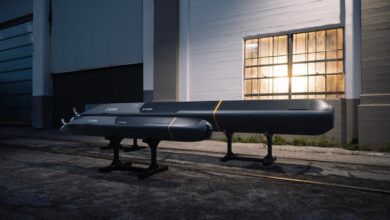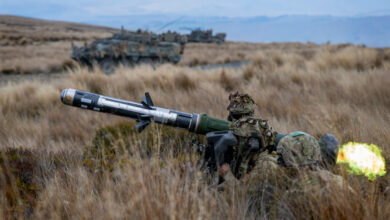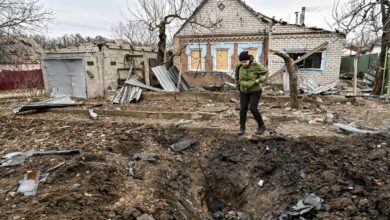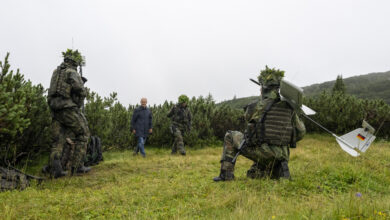Whether in Syria, Libya, or Azerbaijan, Turkey’s combat drones have scored high-profile successes that Ankara hopes to use in its quest to become a premier exporter of the aerial vehicles.
Besides their proven ability to take out enemy tanks, analysts said drones also offer Turkey a chance to beef up its spheres of influence through an increasingly assertive foreign policy.
In Syria, Turkey used armed drones to avenge the deaths of dozens of soldiers and halt the advance of regime forces in the northwestern province of Idlib.
In Libya, the unmanned craft flew to the aid of Turkey’s allied government in Tripoli, routing the advancing forces of eastern commander Khalifa Haftar at the capital’s gates.
And late last year, Turkish drones helped Azerbaijan retake swathes of territory from ethnic Armenian separatists that had been lost in the mountains of Nagorno Karabakh decades ago.
All these conflicts grabbed world headlines and offered Turkey the perfect opportunity to showcase its hardware, analysts Can Kasapoglu in Istanbul and Emre Caliskan in the UK said, as it tries to become a major military exporter — particularly of armed drones.
Ismail Demir, head of Turkey’s Defence Industry Presidency (SSB), told AFP Turkish drones offer good value for money.
Half the Price
“If a system from any other country had the same capability as ours, its (price) would be double,” Demir said in an interview at his office in Ankara, which is filled with models of drones and other military gear.
SSB, which is part of the Turkish presidency, is the umbrella organization that oversees state defense companies. These include Turkish Aerospace Industries, which makes the Anka combat drone.
“We were trying to do something we could lead in or could be at the front of in modern technologies, and drones became the perfect area,” Demir said.
The first Turkish combat drones were used in 2016 as the army clashed with Kurdish militants in the country’s restive southeast.
In December, Turkish Aerospace Industries signed the first export contract for the Anka, worth an estimated $80 million, with Tunisia.

But the private Baykar company, run by one of President Recep Tayyip Erdogan‘s son-in-laws, has been exporting its Bayraktar TB2 model to Ukraine, Qatar, and Azerbaijan for some years.
“Export is an issue (because) our domestic priorities go first. But, of course, a sustainable defence industry requires export,” Demir said.
“And there are so many other countries in Southeast Asia, the Middle East, northern Africa and even Europe which are interested in our systems and our drones,” he said. “They had some visits to Turkey and some of them are evaluating our offers.”
US Sanctions
The United States banned SSB from receiving new arms export licenses in December and imposed sanctions on Demir himself in retaliation for Turkey’s purchase of Russia’s advanced S-400 missile systems.
Demir played down the sanctions’ impact and insisted that Turkey will be able to produce components and equipment it can no longer obtain from the United States. “It may take a little time, it may be a little costly, but we can do this,” he said.
In a highly competitive global market, Demir said some countries “who are traditionally an exporter” have taken a dim view of Turkey’s rise. “And in any market you want to get in, they will do anything to prevent you,” he said. “The only way you can overcome this difficulty is by speaking with your quality, price and performance.”
Stretching 8.6-meters (28-feet) long and featuring a 17.6-meter wingspan, the Anka is manufactured at a sprawling, ultra-secure factory in Ankara covering four million square meters (1,000 acres) and dotted with hangars.
Turkish Aerospace Industries employs almost 10,000 people, including 3,000 engineers.
“What makes the Anka special is that most of the parts, important and critical parts, are produced and designed in Turkey,” said Serdar Demir, Turkish Aerospace Industries’ vice president for corporate marketing and communication. “We can easily say that the Anka is the most indigenous product and that we do not depend on other countries’ permits.”
‘Game-Changer’
Emre Caliskan, an analyst at London-based IHS Markit, an international business information firm, said Turkey’s push into drone development was partially prompted by a failed putsch against Erdogan in 2016, which was followed by sweeping purges that decimated air force ranks.
“Turkey has had fewer F-16 jet pilots than F-16 jets. Training new F-16 pilots takes up to four years. But drone pilot training is much shorter at nine months,” Caliskan explained. “Turkey has tried to compensate the capability gap in air forces with the drone technology.”
This strategic shift “has enabled Turkey, even as a middle power, to challenge the interest of top-tier military countries,” said Caliskan.
He added that Turkish drones proved themselves admirably against Russian defense systems in Syria, Libya, and Nagorno-Karabakh, becoming a “game-changer (and) shifting the balance of power.”
Kasapoglu, an analyst with the independent Edam think-tank in Istanbul, said Turkey’s drones were a “key military power source. And military power is an asset of foreign affairs.”
Drones, Caliskan added, might also aid rapprochement with some of Turkey’s regional rivals.
Erdogan revealed on Tuesday that Saudi Arabia, struggling in its war in Yemen, was looking to buy combat drones from Turkey despite an ongoing rivalry between the two powers for influence in the Middle East.

